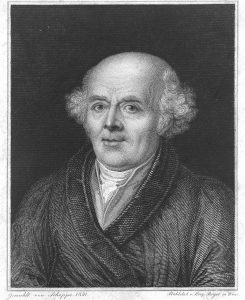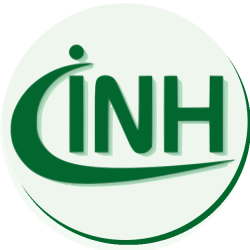
In 1755 a devastating earthquake destroyed Lisbon, the British-French war over North America raged and on 10 April Christian Friedrich Samuel Hahnemann was born in Meissen (Triebischvorstadt) as the third child of the porcelain painter Christian Gottfried and his wife Johanna Christine Hahnemann. Of course, it was not yet foreseeable that this little innocent child would invent the greatest hoax of medicine: homeopathy. In his birthplace Meissen, little Samuel went first to the city school and then with a scholarship to the “Fürstenschule St. Afra”.
From 1775 he studied medicine in Leipzig, earning his living as a translator (for many medical texts) and language teacher. Another station of his studies was Vienna, where he stayed for a good three quarters of a year, until he got a job as librarian and personal physician with the new imperial governor of Transylvania, Baron Samuel von Brukenthal. He therefore spent the next two years in Hermannstadt (today Sibiu), where he was also admitted to the Masonic Lodge “Zu den drei Seeblättern” (The Three Lake Leaves).
In 1779 he received his doctorate at the University of Erlangen. He not only worked as a doctor, but also as a chemist, translator and writer. He also often changed his place of residence and moved through numerous North and Central German cities, whereby his medical success oscillated between practice closures and complete overworking. He also continued his chemical experiments, his greatest success probably being the “Hahnemann wine test”. With this small experiment one could see whether a wine was mixed with toxic lead sugar. The Prussian government prescribed this wine tasting to the Berlin wine merchants by law.
In 1782 Hahnemann married the daughter of the Hettstedt pharmacist, Johanna Leopoldine Henriette Küchler, who was to give him eleven children in rapid succession.
The list of Hahnemann’s family’s places of residence until 1796 is long: Gommern – Dresden – Lockwitz – Leipzig – Stötteritz – Gotha – Königslutter – Moschleben – Göttingen – Pyrmont – Wolfenbüttel – Braunschweig. On average he moved every year, which was mainly due to the economic possibilities of the individual places. However, there were also often disputes with pharmacists, since the doctor Hahnemann also hired himself out as a chemist and pharmacist and thus poached in foreign territories. Thus the “Leipzig Dispense Controversy” (see below) is also a prominent example.
His changing occupations also gave him insights into more exotic areas of his profession. In Dresden, for example, he supported the city physician, which gave him insight into the forensic medicine of the time. This is also reflected in his memorandum on arsenic poisoning.
In Stötteritz, a suburb of Leipzig, in 1790 Hahnemann translated the two-volume pharmacopoeia of the Scottish physician William Cullen and in a footnote Hahnemann reported for the first time on his own experiment with cinchona bark. This can be regarded as the first step towards the development of homeopathy.
That Hahnemann had a quite good reputation at the beginning of the 1790s is also shown by the memberships in the “Churfürstlich Mayntzische Academie nützlicher Wissenschaften” in Erfurt (1791) and in the “Gelehrtenakademie Leopoldina” (1793).
From 1792 to 1793 he was in charge of a “Recovery Institute for about 4 insane persons from wealthy houses”, which was founded by the publisher Becker in Gotha.
Three years later, after publishing his successful pharmacist encyclopedia in two volumes, he publicly formulated his theory about the healing method he had devised for the first time. This was in an article published in 1796 in “Hufeland’s Journal of Practical Medicines” entitled “Versuch über ein neues Princip zur Auffindung der Heilkräfte der Arzneysubstanzen, nebenst einigen Blicken auf die bisherigen” (“Experiment with a new principle to find the healing powers of the medicinal substances, together with some insights into the previous ones”). Here we also find for the first time the theorem that similar should be cured with something similar.
In Altona (1799) and Mölln (1800), where he moved next, he had no great luck with his undertakings. In Altona a “powder” failed, which should prevent the infection with scarlet fever and in Mölln he sold borax under the name “neues Laugensalz”. This was discovered and he had to refund the money he had earned.
Machern – Eilenburg – Schildau. Again frequent moves between 1801 and 1803. In this time one finds the first reports about homeopathic treatments in his patient journals. In his essay “Ueber die Kraft kleiner Gaben der Arzneien überhaupt und der Belladonna insbesondere” (“On the Power of Small Gifts of Medicines in General and of the Belladonna in Particular”, published in Hufeland’s Magazine), he further deepened his theory.
In 1805, when he lived in Torgau, he used the term homeopathy for the first time. This in an essay that also was published by Hufeland: “Pointer to the homeopathic use of remedies in previous practice”. Also first books appeared, like the “Heilkunde der Erfahrung” (“Medicine with Experience”), a forerunner of the “Organon der Heilkunst”, first published in 1810.
Also at this time his book “Fragmenta de viribus medicamentorum positivis sive in sano corpore observatis” was published, in English “Fragments on the safe medicinal powers or those observed on the healthy body”. Both books are interesting in so far as they describe his self- and external experiments.
In 1810 the first edition of “Organon der rationellen Heilkunde” (from the second edition on named “Organon der Heilkunst”) appeared, which is still the “Bible” of homeopaths today. Due to the presumptuous and polemical tenor of this work, some controversial discussions were ignited. One year later, the “Reine Arzneimittellehre” (Materia medica pura) was published for the first time, in which drug testing on healthy people was presented.
In 1812 Hahnemann habilitated at the University of Leipzig and began to give lectures on homeopathy. He also continued his drug experiments, mainly with his students. However, his work for homeopathy was not only met with approval at that time and soon Hahnemann was involved in extensive academic discourses.
Hahnemann also sought confrontation in other areas. Although the Leipzig pharmacists had the privilege to produce pharmaceuticals, he insisted on producing his own preparations – after which he was sued by three pharmacists. The trial ended with a settlement according to which the pharmacists retained their privilege and Hahnemann was only allowed to take action in an emergency or in rural communities. This process went down in history as the “Leipzig Dispense Controversy”.
Hahnemann, of course, wasn’t pleased of this at all and so he moved to Köthen in 1821, where the Duke of Anhalt-Köthen granted him a privilege for self-dispensing. The first edition of the “Chronic Diseases”, a not undisputed work even among homeopathy fans, also fell into the Köthen period, as Hahnemann introduced the idea of “miasms” for the first time in this work. Hahnemann here for the first time formulated the idea that potentiation should happen by shaking during the dilution steps. He hoped that this would lead to the production of preparations free of side effects.
During his time in Köthen, Hahnemann revised the organon twice. In these two editions, Hahnemann also for the first time advocated the idea that an immaterial vital force of the organism was the origin of the Simile principle. This idea, too, was not shared by all his followers. In general it remains to be said that in the 1830s the battles for direction within the homeopaths increased strongly and Hahnemann often expressed himself quite drastically about his “opponents”.
In 1830 his wife died and at the end of 1834 he met the French painter Mélanie d’Hervilly in his practice. Both fell in love with each other and their wedding in Hahnemann’s house after only a few weeks on January 18, 1835 provided a topic of conversation in Köthen society. At 34, the bride was 45 years younger than the groom. The fact that the wedding was held in a private ceremony without church blessing also cheered on the gossip.
In 1835 Hahnemann and his new wife moved to Paris, where he opened a homeopathic practice – just like in Köthen. Hahnemann worked here on the sixth edition of the Organon, which he finished in 1842. Here he introduced the Q potencies, which included dilution steps of 1:50,000.
Samuel Hahnemann died on 2 July 1843 in Paris, where he is still buried today. The sixth edition of his Organon, however, was first published by Richard Haehl in 1921 due to disputes between Mélanie Hahnemann and her husband’s students.
Author: Michael Scholz
Picture credits: Samuel Christian Friedrich Hahnemann. Line engraving by L. Beyer after J. Schoppe, senior, 1831.
Copyrighted work available under Creative Commons CC BY 4.0 http://creativecommons.org/licenses/by/4.0/

